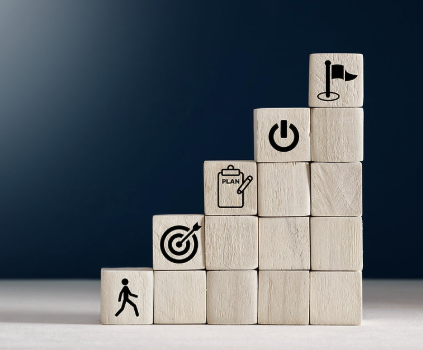Setting and tracking goals is a powerful way to stay focused and motivated in academics, personal development, and daily routines. With the rise of digital tools, it’s easier than ever to organize your objectives, monitor your progress, and build lasting habits using apps and platforms specifically designed for goal tracking. Whether you’re a student managing coursework, a professional developing skills, or someone working toward personal growth, digital goal-tracking tools can help you turn ambitions into achievements. Here’s how to make the most of them:
- Choose the Right Tool for Your Goals
Not all digital trackers are built the same. Some are designed for daily habits (like drinking water, journaling, or reading), while others are geared toward long-term projects (like completing a thesis or building a portfolio). Some of the best and most widely used platforms include:
- Trello – Ideal for organizing long-term goals with checklists, boards, and visual pipelines. Great for managing multi-step projects or academic deadlines.
- Todoist – A task manager with prioritization, recurring tasks, and productivity tracking. Best for managing short- to medium-term goals.
- Habitica – Combines habit tracking with gamification. Completing tasks earns points and helps build streaks, making it fun and engaging.
- Google Keep or Apple Reminders – For straightforward checklist-based goals and reminders that sync across devices.
- Notion – Extremely versatile. You can create a personalized goal dashboard with calendars, progress bars, embedded links, notes, and custom trackers.
- Goals on Track – Focuses on SMART goals (Specific, Measurable, Achievable, Relevant, Time-bound), offering visual reports and goal breakdowns.
- Strides – A progress tracker that allows goal planning with daily habits, milestone targets, and SMART goal formatting.
- Break Down Big Goals into Smaller Steps
A major reason people abandon their goals is because they’re too broad or overwhelming. For instance, “Get better grades” can be broken down into steps like “review notes weekly,” “attend all office hours,” and “complete one mock test biweekly.” Your tool should allow subtasks and deadlines. Trello and Notion are great for this, as are structured project tools like ClickUp or Monday.com. - Set Clear Deadlines and Reminders
Good digital tools help automate your commitment. Apps like Todoist, TickTick, and Microsoft To Do allow you to add due dates, set recurring events (like “study flashcards every Tuesday”), and send reminders across your devices. Reminders ensure you stay on track even when life gets busy. - Visualize Your Progress
Visual progress tracking can be incredibly motivating. Tools like Strides or HabitBull display daily streaks and completion rates. Notion allows the addition of progress bars and pie charts using simple formulas. Google Sheets and Airtable also allow you to build visual dashboards for goals. - Review and Reflect Regularly
Set aside weekly or monthly check-ins to assess progress. Journaling features in Notion or using templates in Google Docs can support personal reflection. During these sessions, ask:
- What worked well?
- What was difficult?
- What adjustments will I make?
This reflection helps make goals flexible and sustainable.
- Use Templates and Pre-Built Systems
Most platforms offer downloadable or pre-made templates. Whether it’s a reading log, academic planner, study tracker, or wellness goal sheet, using templates saves time and helps structure your system. Explore template galleries on Notion, Trello, and ClickUp to find one that matches your goals. - Sync Across Devices for Accessibility
Digital tools are only useful if you remember to use them. Choose apps with cross-device sync capabilities. Whether you’re on your laptop, tablet, or smartphone, apps like Notion, Todoist, and Google Calendar keep your goals accessible 24/7. - Involve Accountability Partners
Goal-tracking becomes even more powerful with external motivation. Tools like Trello, Asana, and Google Sheets allow you to share boards or checklists with friends, teachers, or mentors. Habitica includes group challenges and guilds for friendly competition. - Celebrate Small Wins and Adjust When Needed
Don’t just check off items—celebrate progress. Use emojis, create “celebration” tags, or reward yourself after each milestone. Acknowledge when goals need tweaking rather than abandoning them. Flexibility is part of sustainable success. - Combine Goal Tracking with Time Management Tools
Apps like Forest (focus timer), Clockify (time tracker), and Pomofocus (Pomodoro method) work well alongside goal-setting tools. These can help you stay productive, especially during dedicated goal-review or execution blocks. - Integrate Journaling and Mood Tracking
Some digital tools let you combine emotional reflection with goal tracking. Tools like Reflectly, Daylio, or journaling within Notion help you monitor not only progress but also how you feel during the process. This holistic view can help prevent burnout and promote long-term motivation. - Use Metrics and Reports to Stay Informed
Apps like Goals on Track and Strides give detailed reports about your performance trends. For example, how often you meet deadlines, which tasks are overdue, or how your consistency changes over time. These insights help you adjust habits to stay effective.
In summary, digital goal-tracking tools can make the process of achieving academic, personal, and professional goals more structured, motivating, and effective. By choosing the right platform, setting clear milestones, reviewing your progress, and using visual feedback, you can build a habit of success that grows over time. From simple checklist apps to advanced productivity dashboards, there’s a tool for every learner and goal-setter who wants to stay focused and inspired.














